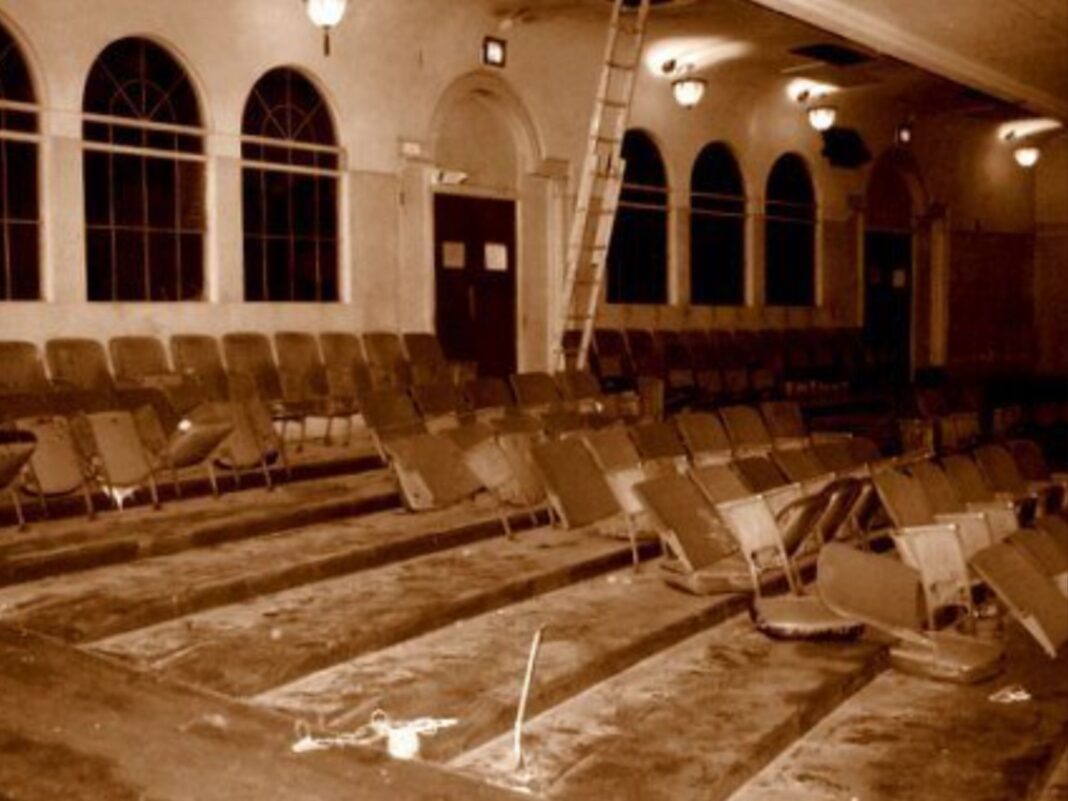The Liberty Theatre is among Oregon’s latest entries in the National Register of Historic Places. Oregon’s State Advisory Committee on Historic Preservation (SACHP) recommended the nomination at their February 2023 meeting. The National Park Service — which maintains the National Register of Historic Places — accepted this nomination in June 2023.
The Liberty Theatre is located at the SW corner of the intersection of Sherman and Washington avenues, at the southern end of downtown North Bend, Oregon. The theatre was completed in 1924 from designs by the Portland architectural office of Tourtellotte and Hummel, built by Salem based contractors Hoover and McNeil with the original interiors designed by Carl R. Berg, of the B. F. Shearer Company. The Moorish-inspired design includes towers created by incised stucco treatments, decorative copper domes, arched entry openings and other details.
Throughout the 1920s and into the 1930s, the Liberty served as a community center, hosting live Sunday concerts, high school plays, lectures and other events, in addition to showing motion pictures. The first “talkie” movie at the Liberty was Speakeasy, shown on July 9, 1929, after a sound system was installed in the auditorium.
The theatre is significant for its association with the history and development of entertainment and recreation in the North Bend area and the growth of that city during the early 1920s period.
Continuing its original motion picture use until 1954, since 1959 the Liberty Theatre has been the home of Little Theater on the Bay, a Coos County-based community theater group that is among the oldest performing arts organizations in the state. The Liberty Theatre, owned and operated by Little Theater on the Bay, continues to provide a venue of arts and culture in the southwest Oregon coastal region.
Beginning in 2015 the Liberty Theatre has been the focus of a multi-phased restoration and rehabilitation effort that has restored original windows, removed non-historic exterior treatment and repainted in historically-based colors, upgraded the main lobby, and auditorium, and re-installed the copper roof-top domes.
The State Historic Preservation Office used funds provided through the National Park Service Paul Bruhn Historic Revitalization Grants Program to complete this National Register nomination. The grant program fosters economic development in rural communities through the rehabilitation of historic buildings in those communities.
The National Register is maintained by the National Park Service under the authority of the National Historic Preservation Act of 1966.
This effort is in line with Oregon’s Statewide Preservation Plan that seeks to increase the number of listings in the National Register. It also supports the goals to increase access to Oregon heritage that are part of the Oregon Heritage Plan.
Properties listed in the National Register are:
- Recognized as significant to the nation, state, or community;
- Considered in the planning of federal or federally-assisted projects;
- Eligible for federal and state tax benefits;
- Qualify for historic preservation grants when funds are available;
- Eligible for leniency in meeting certain building code requirements;
- Subject to local laws pertaining to the conservation and protection of historic resources.
State law in Oregon requires local governments to offer a minimal level of protection for properties listed in the National Register of Historic Places; the decisions about how to accomplish that goal reside with local governments, which also have the authority to create and regulate local historic districts and landmarks.







